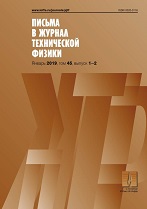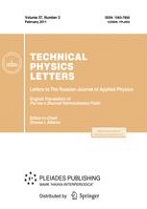|
|
Pisma v Zhurnal Tekhnicheskoi Fiziki, 2016, Volume 42, Issue 13, Pages 32–43
(Mi pjtf6370)
|
 |
|
 |
This article is cited in 7 scientific papers (total in 7 papers)
Nanofluids for power engineering: Emergency cooling of overheated heat transfer surfaces
B. I. Bondarenko, V. N. Moraru, S. V. Sidorenko, D. V. Komysh
The Gas Institute of the National Academy of Sciences of Ukraine, Kyiv
Abstract:
The possibility of emergency cooling of an overheated heat transfer surface using nanofluids in the case of a boiling crisis is explored by means of synchronous recording of changes of main heat transfer parameters of boiling water over time. Two nanofluids are tested, which are derived from a mixture of natural aluminosilicates (AlSi-7) and titanium dioxide (NF-8). It is found that the introduction of a small portions of nanofluid into a boiling coolant (distilled water) in a state of film boiling ($t_{\operatorname{heater}}>$ 500$^\circ$C) can dramatically decrease the heat transfer surface temperature to 130–150$^\circ$C, which corresponds to a transition to a safe nucleate boiling regime without affecting the specific heat flux. The fact that this regime is kept for a long time at a specific heat load exceeding the critical heat flux for water and $t_{\operatorname{heater}}$ = 125–130$^\circ$C is particularly important. This makes it possible to prevent a potential accident emergency (heater burnout and failure of the heat exchanger) and to ensure the smooth operation of the equipment.
Received: 04.01.2016
Citation:
B. I. Bondarenko, V. N. Moraru, S. V. Sidorenko, D. V. Komysh, “Nanofluids for power engineering: Emergency cooling of overheated heat transfer surfaces”, Pisma v Zhurnal Tekhnicheskoi Fiziki, 42:13 (2016), 32–43; Tech. Phys. Lett., 42:7 (2016), 677–681
Linking options:
https://www.mathnet.ru/eng/pjtf6370 https://www.mathnet.ru/eng/pjtf/v42/i13/p32
|


| Statistics & downloads: |
| Abstract page: | 43 | | Full-text PDF : | 22 |
|





 Contact us:
Contact us: Terms of Use
Terms of Use
 Registration to the website
Registration to the website Logotypes
Logotypes








 Citation in format
Citation in format 
